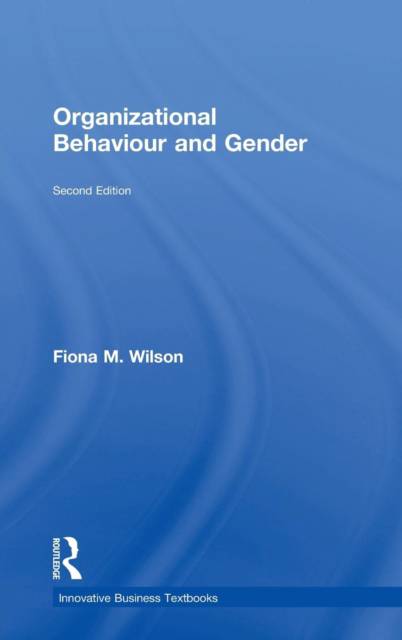
Door een staking bij bpost kan je online bestelling op dit moment iets langer onderweg zijn dan voorzien. Dringend iets nodig? Onze winkels ontvangen jou met open armen!
- Afhalen na 1 uur in een winkel met voorraad
- Gratis thuislevering in België vanaf € 30
- Ruim aanbod met 7 miljoen producten
Door een staking bij bpost kan je online bestelling op dit moment iets langer onderweg zijn dan voorzien. Dringend iets nodig? Onze winkels ontvangen jou met open armen!
- Afhalen na 1 uur in een winkel met voorraad
- Gratis thuislevering in België vanaf € 30
- Ruim aanbod met 7 miljoen producten
Zoeken
Omschrijving
Organizational Behaviour and Gender provides an alternative to the gender silence of the standard OB textbooks. This Second Edition updates and expands the text's coverage and employs the most recent research findings to portray the world of work in a realistic manner. Organizational Behaviour and Gender is a comprehensive text. The text examines some of the assumptions that have been made about women at work - for example that women's 'difference' is rooted in biology and that women and men have contrasting (and even polar opposite) skills and attitudes. The text considers the key topics in OB (such as selection, assessment, leadership and motivation) to test such assumptions. The book describes the reality of working life for women. It examines issues of low pay, part-time working, family responsibilities, home working and horizontal and vertical job segregation. It asks whether inequality of opportunity comes about because of actual gender differences or from prejudicial expectations and thinking. The last chapter is about sex and sexuality in organizations. Sexual behaviour in organizations is pervasive but is rarely discussed in OB textbooks. This chapter describes the masculine and heterosexual business environment and examines the issues of work romances and sexual harassment. The text provides numerous learning aids (including discussion topics and chapter questions) to assist both the lecturer and the student.
Specificaties
Betrokkenen
- Auteur(s):
- Uitgeverij:
Inhoud
- Aantal bladzijden:
- 264
- Taal:
- Engels
- Reeks:
Eigenschappen
- Productcode (EAN):
- 9780754609001
- Verschijningsdatum:
- 28/04/2003
- Uitvoering:
- Hardcover
- Formaat:
- Genaaid
- Afmetingen:
- 156 mm x 234 mm
- Gewicht:
- 544 g

Alleen bij Standaard Boekhandel
+ 610 punten op je klantenkaart van Standaard Boekhandel
Beoordelingen
We publiceren alleen reviews die voldoen aan de voorwaarden voor reviews. Bekijk onze voorwaarden voor reviews.











